Denim, a fabric renowned for its exceptional durability and robustness, was initially crafted as material for abrasion-resistant work garments for the labor class. Through multiple evolutions, it gradually found its way into the creation of diverse items, with jeans being the most prominent among them.
Do you know how many types of denim fabric?
Four considerations when choosing a denim fabric
Weight
Denim fabric is measured in ounces (oz) per square yard. The higher the number of ounces per square yard, the heavier the fabric, and generally, the thicker it is.
In general, denim fabric with a weight of less than 12 ounces per square yard is classified as lightweight fabric. The denim jeans we commonly wear typically weigh between 8 to 12 ounces per square yard, making them suitable for different seasons and climates.
Medium-weight denim falls in the range of 12 to 16 ounces per square yard. This weight of denim is used for sturdy denim jackets.
Heavyweight denim weighs 16 to 32 ounces per square yard. It’s woven very densely and is primarily used for interior decorations rather than clothing.
Weave and Texture
Fabric weave refers to the way yarns are interlaced, directly affecting the texture and appearance of the fabric.
For instance, plain weave is the most basic fabric weave, where yarns intersect at right angles, creating a uniform grid-like texture. Plain weave is commonly used for lightweight denim fabric.
Twill weave, on the other hand, is the primary fabric weave used for most denim jeans. Yarns are interlaced diagonally, producing a distinct diagonal texture. Fabric produced using twill weave is more durable and resistant to abrasion compared to plain weave fabric.
Other weave patterns include herringbone weave, twill diamond weave, jacquard weave, etc., depending on the desired fabric effect you’re aiming for.
Finish and Treatment
The denim jeans washing process refers to using various treatment and processing methods to impart different appearances, colors, and textures to the denim fabric. Common washing techniques include stone washing, enzyme washing, bleach washing, snow washing, sandblasting, etc. The choice depends on the desired effect.
For instance, stone washing involves adding specially shaped stones to the machine, and then washing them along with the denim fabrics, thus creating a worn and distressed effect on the fabric surface.
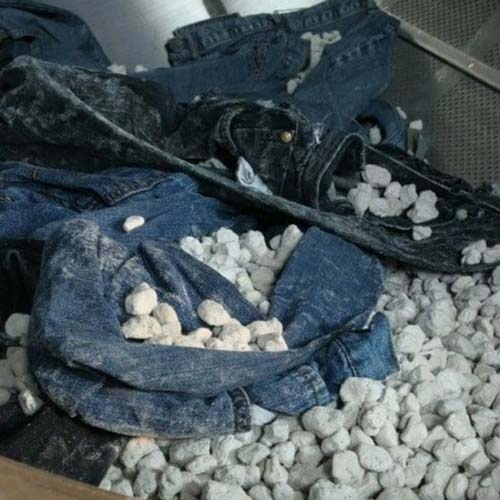
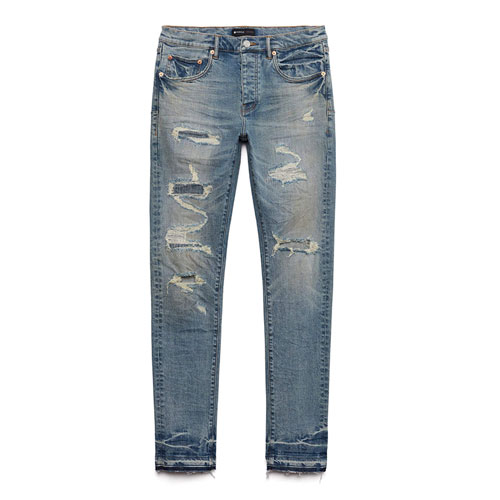
Another technique is acid washing, which involves using acidic chemicals like bleach to treat denim fabric. This creates a fashionable and worn-out appearance on the fabric.
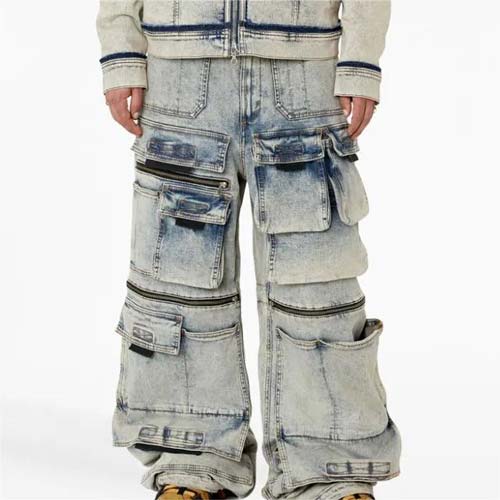
If you’re interested in learning more about denim fabric washing techniques, particularly in the context of denim jeans, you can click on the video below.
Color Fastness
Color fastness is related to the properties of dyes and the dyeing/printing techniques used. It can be affected by various external factors such as squeezing, friction, light exposure, washing, ironing, and water exposure, thus leading to color fading or running. This situation is particularly common in denim fabric due to the characteristics of indigo dye.
Color fastness testing generally includes tests for light fastness, weather fastness, washing fastness, rubbing fastness, and perspiration fastness. With the exception of light fastness, which has eight levels, the other categories are typically graded on a five-level scale. Higher grades indicate better color fastness.
Therefore, you’d better ask your supplier about the fabric’s color fastness standards, especially when purchasing denim fabric dyed in colors like blue or black.
Eight common types of denim clothes
Denim is typically crafted from cotton fibers, but it can also incorporate other fibers to modify its properties. The following are several fiber materials utilized in the production of denim:
100% Cotton Denim

The majority of denim is fashioned from cotton fibers, making it the quintessential denim fabric. Cotton fibers boast excellent breathability and strong moisture absorption, contributing to denim’s remarkable comfort and durability.
Fox Fiber Denim
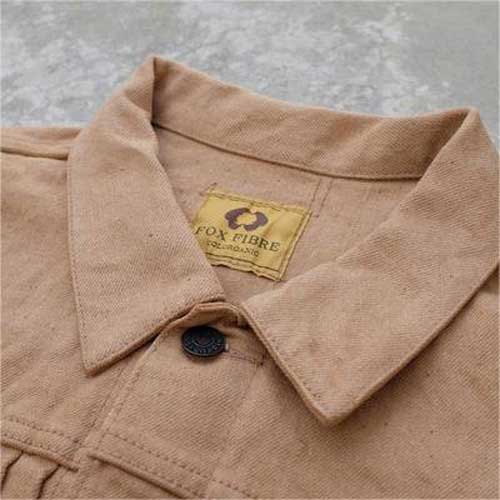
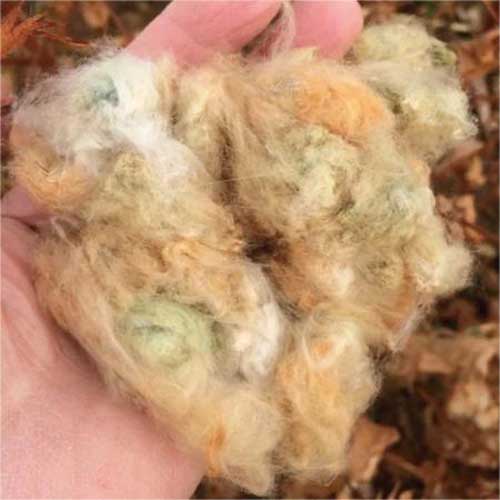
Sally Fox created this organic cotton in various colors (Redwood, Coyote, New Green, and Buffalo). Denim made from this fiber does not need to be dyed to have a bright appearance.
Stretch Denim
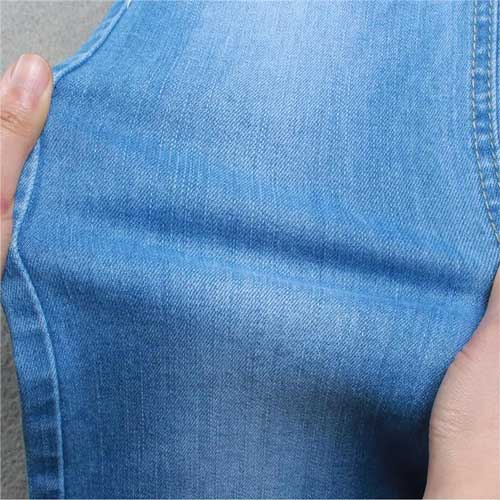
In comparison to traditional denim, this fabric incorporates elastic fibers such as spandex. This unique blend gives denim greater stretch and is therefore often used to make stretchy jeans, offering the wearer greater comfort and freedom of movement.
Poly Denim
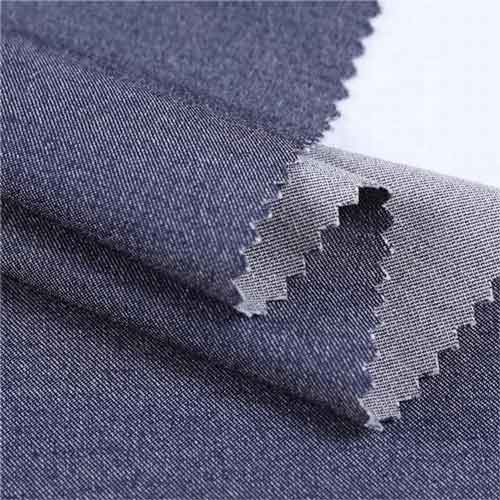
Denim is blended with polyester fibers can add durability and wrinkle resistance. The quick-drying nature and color stability enable it to perform exceptionally well in various environments.
Corduroy Denim
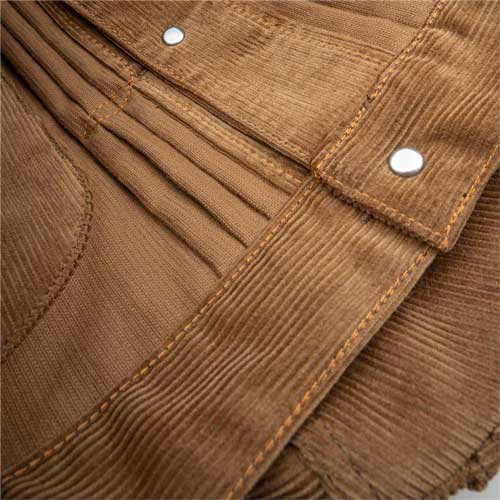
It retains the firmness of denim, yet has the soft touch of corduroy. This gives the fabric a casual style and a comfortable wearing experience. For example, some fashion corduroy jackets and pants are made from this material, combining both comfort and a polished look
Ramie Denim

It is a natural fiber derived from the stalks of the ramie plant and boasts a glossy white appearance. When blended with cotton fibers, the qualities of both materials are harnessed, giving rise to a distinctive fabric.
This fabric not only possesses a unique texture but also exhibits remarkable breathability.
Linen Denim
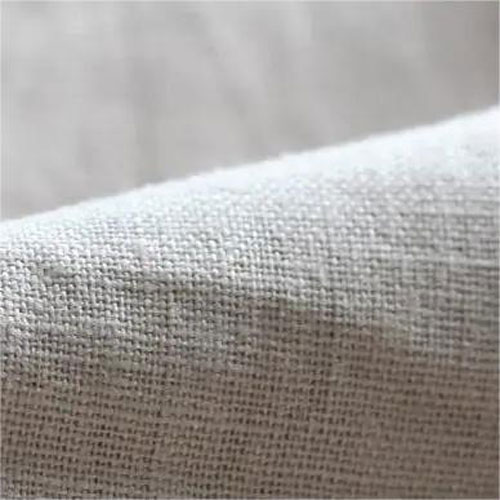
This is a denim fabric woven from a blend of cotton and linen, preserving the tactile quality of hemp fibers while incorporating the softness and breathability of cotton.
Denim pants made from these materials are often lightweight. They are particularly suitable for summer wear. At the same time, it is also made into items such as tablecloths.
Lyocell Denim
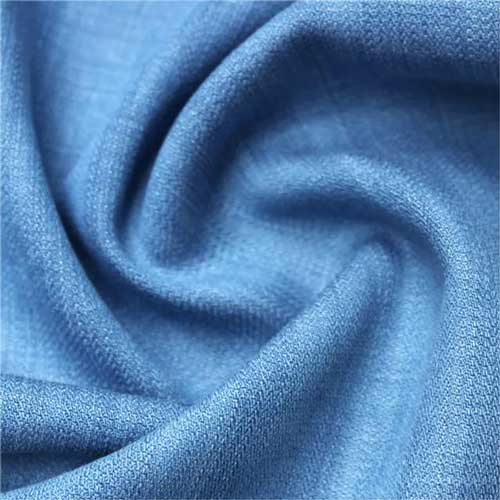
Lyocell is derived from renewable sources like bamboo and wood and is a sustainable fabric. This material is known for its soft and lightweight texture.
Additionally, due to its unique microfiber structure, it’s often referred to as “breathable fiber”.
As a leading sourcing company in China, JingSourcing has helped more than 4000+ importers source different kinds of products. There are also many orders for denim fabrics.
We have dealt with many experienced denim manufacturers and know all types and processing methods of denim fabric. Meanwhile, we can help you purchase and customize high-quality denim fabrics and products for various purposes at ex-factory prices according to your needs.

Leave A Comment